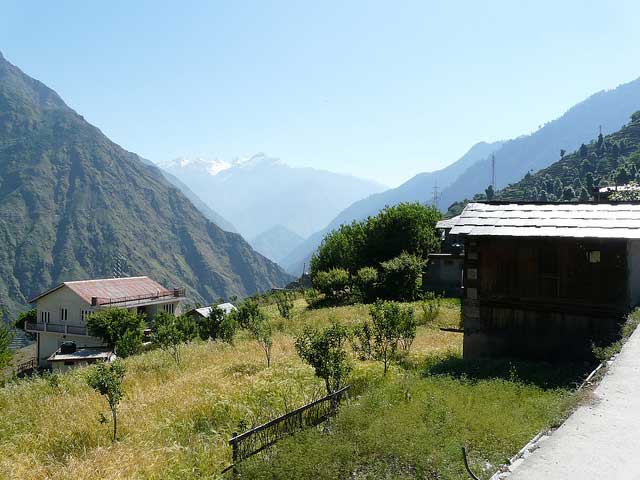The hill town of Chamba is situated on the banks of Ravi river right at the point of its confluence with the Sal River. Sitting atop an elevation of 996 meters above sea level, Chamba is one of the important tourist towns of Himachal Pradesh. The history of the place can be traced back to the 2nd century BC when it was ruled by the Kolian Tribes.
The town (which is also a popular hill station in Himachal Pradesh) was later developed by the Kings of, the Gupta Empire, the Pratihara or the Rajput Dynasty and finally the British. The name Chamba was kept after the daughter of the Maru king, Raja Sahil Varman who shifted the capital of his kingdom from the adjoining town of Bharmour during the 10th century AD. The terrain surrounding Chamba primarily consists of hills, valleys, rivers and is a popular tourist resort away from the usual hustle and bustle of the cities.

Image credit – Varun Shiv Kapur, CC BY 2.0
Climatic Conditions
Chamba is situated at an elevation between 900 and 1000 meters above sea level at the southern end of the inner Himalayas. Due to the high elevation, the town enjoys a temperate highland climate with mild to warm summers and chilly yet pleasant winters. The summer months between April and June experience a warm summer with maximum temperatures upto 39 degrees Celsius. The monsoon months see plenty of rainfalls and provide a picturesque setting for the visitors and honeymooners. The winters starting from late-October till late-February see a chilly winter with occasional snowfall. Temperature drops to -1 degrees Celsius can also be experienced in the months of December and January.
Best Time to Visit
Chamba experiences a warm summer and chilly winters with plenty of rainfalls during the monsoon season. While the town is loaded with tourists during the months between March and June, the best time to visit Chamba is between late-September and November when one can experience a cool climate with occasional showers from the retreating monsoons.
Attractions/Things to Do
The town of Chamba is divided into two parts, namely the old and the new town and contains several historical and pre-modern monuments and temples. The town is located amidst the snowcapped mountains of Dhauladhar and Zanskar ranges which can be viewed from the various view points in the town. The confluence of the Ravi and the Sal River has also provided a magical and enchanting location to the town.
Champavati temple, Lakshmi Narayan group of temples, Sui Mata temple, Akhand Chandi Palace, Shiva Temple, Chaugans, Church of Scotland, Chamba library and the Bhuri Singh Museums are the few most popular attractions in Chamba.
How to Reach
Despite of its mountainous location, Chamba is well connected with the adjoining towns and state via road and railways. The nearest broad gauge railway station is located in the city of Pathankot which can be reached via buses or taxis. One can also travel from Pathankot to Joginder Nagar via a narrow gauge train. The closest domestic airports are located in the nearby hill town of Kangra and Pathankot. Pathankot airport is also well connected with flights from Delhi.
Distance from Major Cities
1. Dalhousie – 55 Kilometers
2. Pathankot – 104 Kilometers
3. Dharamshala – 126 Kilometers
4. Chandigarh – 331 Kilometers
5. Shimla – 345 Kilometers
6. Manali – 353 Kilometers
7. Delhi – 578 Kilometers
8. Jaipur – 789 Kilometers
9. Lucknow – 1,008 Kilometers
10. Ahmedabad – 1,455 Kilometers
11. Mumbai – 1,926 Kilometers
12. Kolkata – 2,031 Kilometers
13. Hyderabad – 2,112 Kilometers
14. Bangalore – 2,701 Kilometers
15. Chennai – 2,739 Kilometers
Accessibility and Accommodation
Chamba is a popular tourist destination and has a plenty of accommodation facilities which suit all types of tourist budgets. Tourists often find accommodation in the nearby town of Dalhousie which is also a much frequented tourist spot. Buses and taxis can be used to get around the various places in Chamba but to experience the surroundings at their best, it is advised to explore the town on foot.

